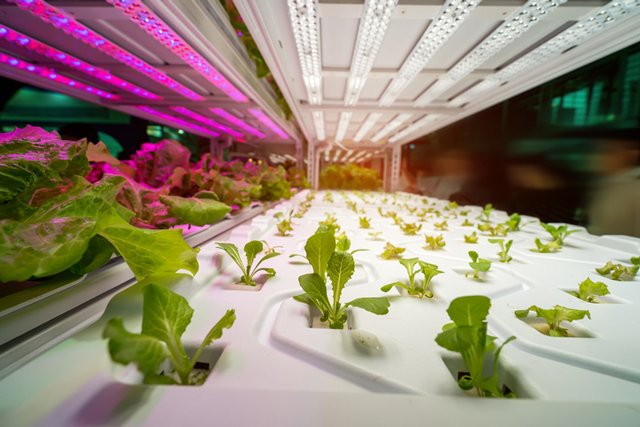From Richmond Magazine – richmondmagazine.com
From energy-efficient lights to indoor farming, Bowerbird Energy takes flight

When Chris Rawlings began selling LED lights door to door in 2014, he had a singular focus: Build a business replacing his clients’ outdated lighting systems.
Focusing on office facilities, from small spaces to those up to 600,000 square feet, Rawlings, a Marine Corps veteran, brought on a partner in 2017, and his company, Veteran LED, reached $1 million in sales the following year. He found, however, that some customers were interested in more than just efficient lighting.
They wanted to save money, of course, and learn how to access incentives for implementing energy-efficient systems. But they also wanted sustainability.
“Our commercial industrial clients ask us, ‘How do we reduce our carbon footprint?’ ” Rawlings says.
So, in 2019 he expanded into other aspects of energy efficiency, learning to meter buildings, analyze utility bills and revamp HVAC systems. The business took off, and Rawlings bought out his investor in 2021, resuming full control of the company. To reflect the broadening scope of its services, Rawlings rebranded the company as Bowerbird Energy in January.
Naturally, Bowerbird’s evolution led Rawlings to his latest frontier: indoor agriculture.
“Last year, I was approached by a potential client who was an indoor cannabis grower,” Rawlings explains. “This is a niche market, and obviously, a building with 100,000 plants growing inside of it is different from an office building. I became intrigued and started doing research.”
Turns out that the controlled environment agriculture industry is experiencing a growth spurt, and Bowerbird’s consulting and contracting skills were a natural fit. It’s also an industry that requires precision: A slight miscalculation in this type of energy system can have serious consequences — much more so than in an office building.
“You must control the heat, the coolness, the air flow, the amount of light getting to the crop — everything,” says David Seward, program head of the horticulture department at Reynolds Community College. “If you do it right, you get more crop out of that space.”
Although startup costs are high, growing crops indoors can be lucrative. “There’s very little waste in controlled environment agriculture,” Seward says. “You use less water with a hydroponic system, for instance. You have very little pest pressure.
“You can also grow year-round — you can produce lettuce and kale and strawberries in January, which obviously would not be possible outdoors in Central Virginia. And it’s a good marketing tool, because when you grow crops off their peak time, you get a good return.”
To augment his understanding of the field, Rawlings joined the Resource Innovation Institute, a nonprofit that researches and publishes best practice guides for growers.
“It’s an area where we’re still building our knowledge and working to get into that market,” Rawlings says. “Of course, recreating natural external environments inside of a building is a very energy-intensive process. Personally, I’m invested in that space because I think being able to grow the food we eat close to where we consume it is an important aspect of sustainability. It cuts down on food waste; it cuts down on emissions and costs from transportation.”
Rawlings is mum on who Bowerbird is contracting with, but in general, the company is built to work with commercial growers. With more states across the country legalizing recreational use of marijuana, including Virginia, it’s a market that’s poised to take off.
“They have to meet a certain size standard to bring us in. It won’t be mom-and-pop growers with 4,000 to 5,000 square feet — we are looking at canopy spaces over 10,000 square feet,” Rawlings says. This could include cannabis growers moving into Virginia as the plant’s cultivation and possession is legalized. Retail sales of cannabis in the state will be legal by 2024. “Anywhere the market is opening up to recreational marijuana, you have multistate operators opening up.”
For his part, Seward has a high opinion on the future of controlled environment agriculture. “Twenty years ago, people were dabbling in this, but not like today,” he says. “I think if you get the right people together with the right mindset, great things are possible.”